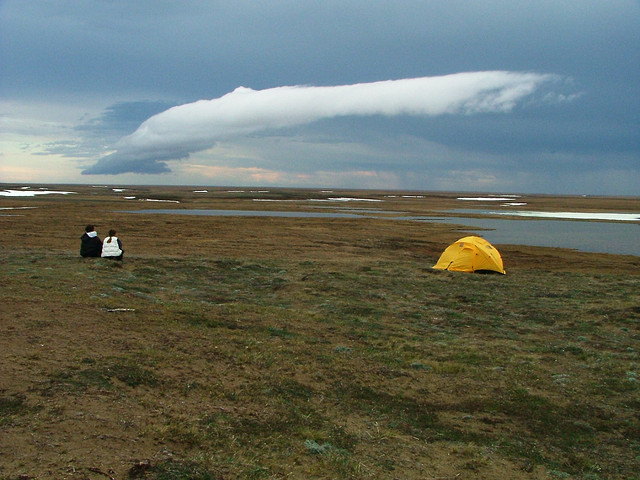The Obama administration’s decision to block oil drilling in the National Petroleum Reserve in Alaska (NPR-A) is the latest symbol of an energy policy that could be described as “none of the above.” It is an even worse decision when you consider the recent history of the Reserve, which was partially opened to oil and gas drilling and exploration by the Clinton administration in the late 1990s. President Barack Obama’s action not only reverses Bill Clinton’s policy, but also undermines Congress’s intent in setting aside the NPR-A in 1976.
It so happens that I wrote my undergraduate thesis on the NPR-A–specifically, on the responses of the Iñupiat Alaska Native communities that live in the Reserve to the expansion of the oil industry. Generally, people in the region favor aggressive oil and gas exploration and development, as long as it can be carried out with due regard for the environment and for subsistence hunting and fishing activity. Most believe that all of those goals are compatible, especially if there is significant local participation and oversight.
When Clinton opened the NPR-A to new leasing, after decades of dormancy, oil was at rock bottom prices. But Clinton had supposedly made a commitment to fellow Democrat and then-governor Tony Knowles (whom Sarah Palin would defeat in 2006). Knowles had run on a platform of opening up Alaska’s oil resources, particularly the Arctic National Wildlife Refuge (ANWR)–the other great parcel of federal land on Alaska’s North Slope. But Clinton vetoed a bill that would have allowed that. So, to provide cover for Knowles, he opened part of the NPR-A.
Before any leasing happened, there was an extensive process of public comment and consultation, spearheaded by the Department of the Interior’s Bureau of Land Management. Eventually, a decision was reached to allow for significant oil and gas exploration and development, but to set aside the most sensitive areas near the coastline, near a body of water called Teshekpuk Lake, which is important for migratory wildlife and for subsistence. Significantly, the BLM rejected the kind of sweeping ban that the Obama administration is now imposing.
There is an irony in Obama’s decision, which is that the NPR-A has more wildlife than ANWR. The joke among scientists is that when Congress set the two parcels aside, it mixed up the names. The most significant wildlife population in ANWR is the Porcupine caribou herd, which migrates south of ANWR but calves on the Arctic coastline–right on top of the area of highest oil and gas potential. The industry has become sophisticated at operating in such areas–using directional drilling, ice roads, and so forth–and could work in ANWR without disrupting the caribou.
Regardless, the idea for decades has been that ANWR and NPR-A represent something of a balance: you can stop drilling in one or the other, but not both. That was the compromise that President Bill Clinton reached. Now President Obama wants to have it both ways, upsetting the balance for the sake of his radical environmentalist supporters, who want to stop fossil fuel development wherever they can. Obama wants credit for an expanding fossil fuel industry elsewhere in the U.S., but his real agenda is to stop that industry’s progress at any cost.
If Obama wants to set aside large swathes of the NPR-A–which was originally designated as a strategic oil resource nearly a century ago–then there must be a trade-off: namely, that oil and gas development and exploration be allowed along the ANWR coastline. The only way a moratorium in the NPR-A makes sense is as a correction of Congress’s original mistake. Switch the purposes of each piece of federal land. Switch the names, if need be. But don’t stop development across the North Slope, closing off jobs to thousands and energy to hundreds of millions.
Photo credit: Amanda and Joe, Flickr

COMMENTS
Please let us know if you're having issues with commenting.